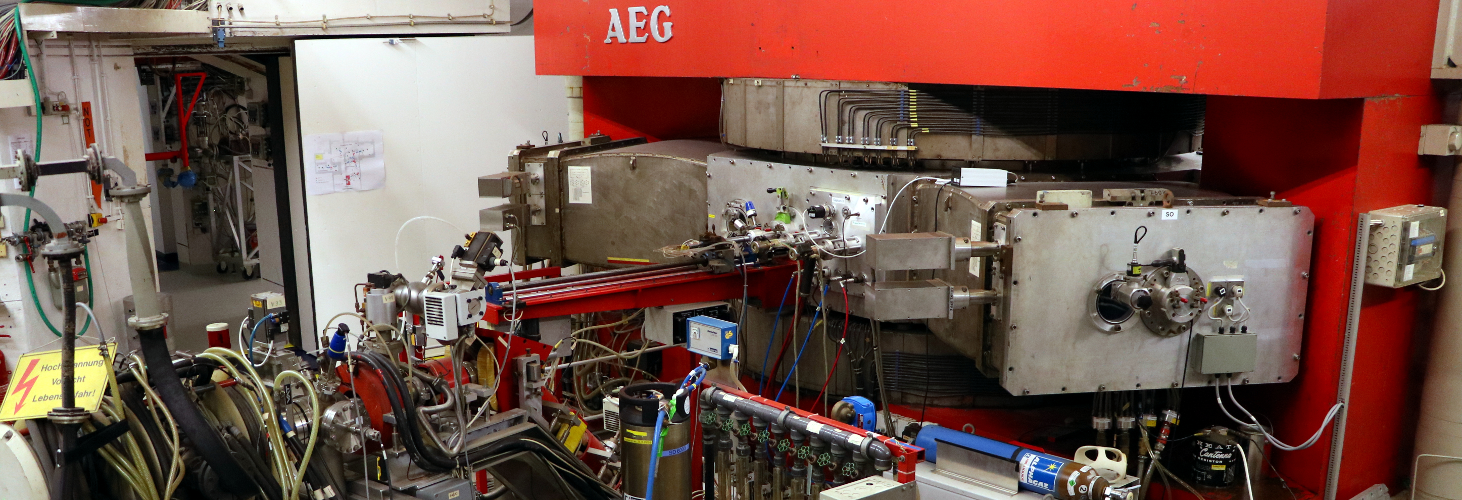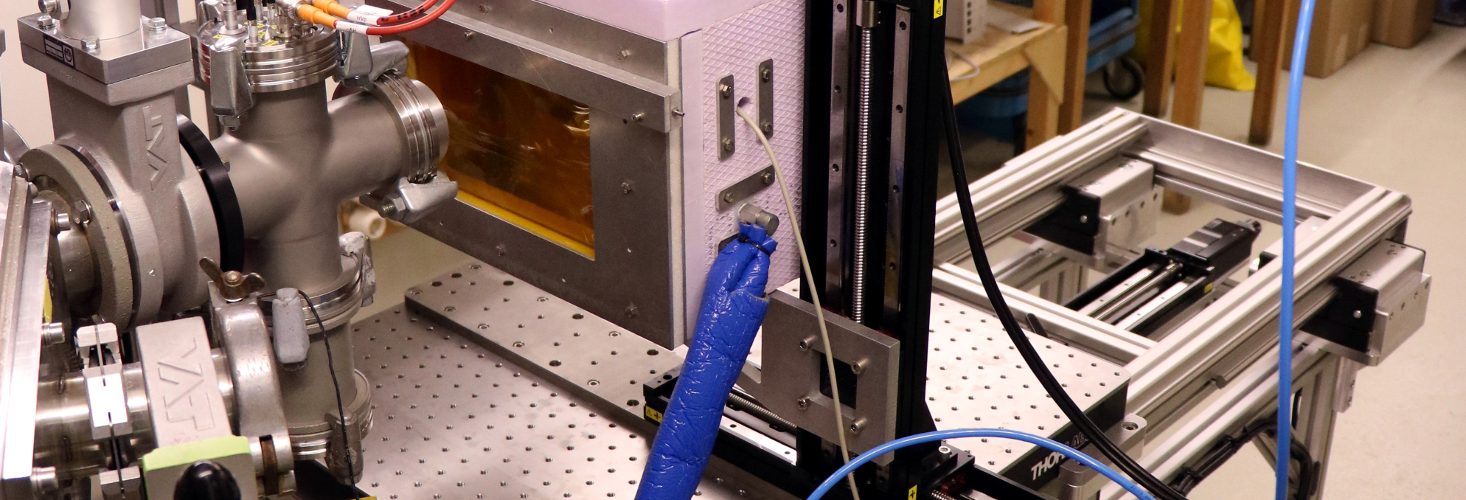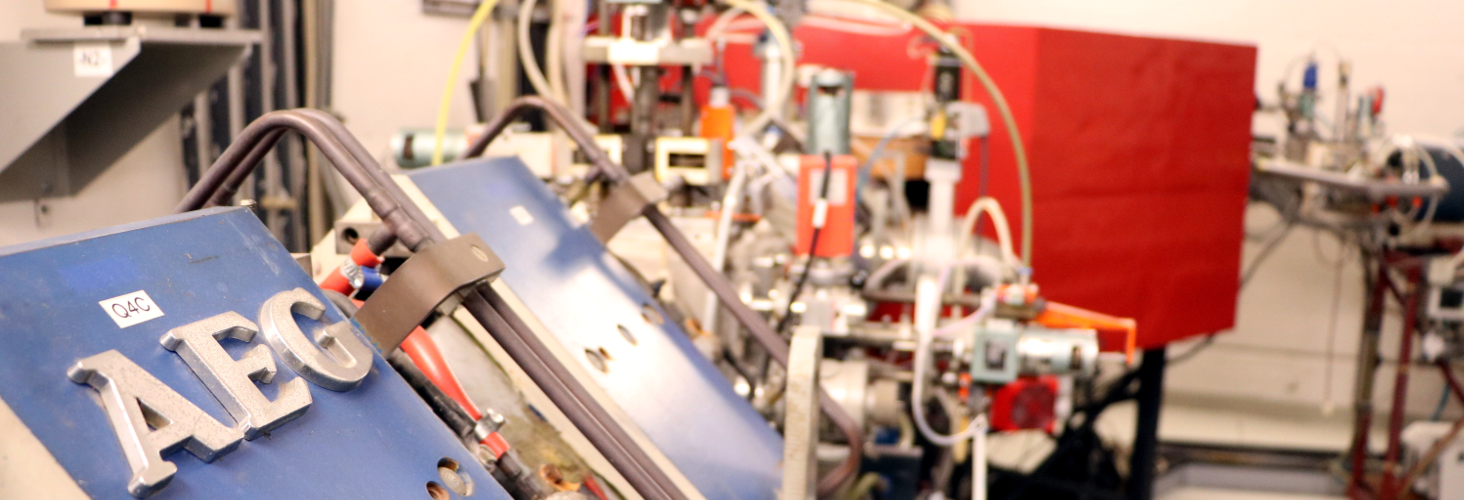The Accelerator Facility
and their physical and technical principles
The cyclotron is the facility's primary accelerator, which increases the kinetic energy of the injected particles by 7 to 14 MeV per nucleon.
The cyclotron is an isochronous cyclotron with three rf duants for particle acceleration.
Beam focusing is ensured by using an azimuthally varying magnetic field, generated by a triple "hill and valley" poleshape of the magnet yoke.
After about 130 revolutions, the beam is deflected to a magnetically-compensated channel using an electrostatic septum and then is extracted out the cyclotron.
Five experimental stations are available where the beam can be used for physics experiments in air or in a vaccum.
In radiation hardness tests, for example, a proton beam is used to produce radiation damage in silicon semiconductor detectors in a controlled process.
The knowledge gained in this way is used to develop more radiation-resistant detectors for e.g. the ATLAS and LHCb experiments at CERN.
An external, two-stage Electron Cyclotron Resonance ion source is used to generate a beam of electrically charged particles.
In it, inserted, electrically neutral gas is ionised in a confined plasma.
The resulting charged particles are then pulled out of the plasma by a high-voltage electrode, accelerated and guided through the injection beamline to the cyclotron.
Depending on the type of gas injected, protons, deuterons or alpha particles can be generated as a beam.
The high-energy beam line enables the beam transport to the individual experimental sites.
Depending on the beam line and magnetic optics used, the energy sharpness of the beam can be improved at the expense of transmission.


